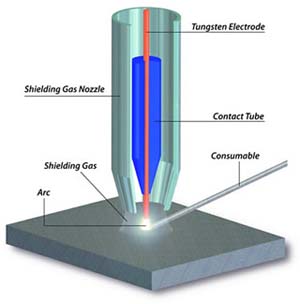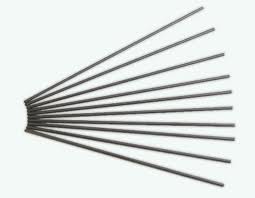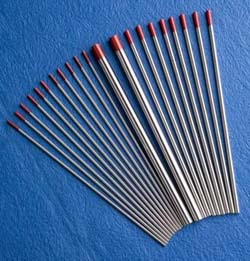Tungsten Electrode Facts
What is Electrode?
An electrode is an electrical conductor used to make contact with a nonmetallic part of a circuit (e.g. a semiconductor, an electrolyte or a vacuum). The word was coined by the scientist Michael Faraday from the Greek words electron (meaning amber, from which the word electricity is derived) and hoods, a way.
What are tungsten electrode facts?
This non-consumable tungsten electrode comes in a variety of sizes and lengths and is composed of either pure tungsten or a hybrid of tungsten and other rare earth elements and oxides. Choosing an electrode for the TIG process depends on the base material type and thickness and whether you weld with alternating or direct current.
Preparation of Tungsten Electrode Facts– Balled, Pointed or Truncated?
A balled tip is generally used on a pure tungsten electrode and is suggested for use with the AC process on sine wave and conventional square wave TIG welders. To properly ball the end of the tungsten, simply apply the AC amperage recommended for a given electrode diameter and the ball on the end of the tungsten will form itself. The diameter of the balled end should not exceed 1.5 times the diameter of the electrode (for example, a 1/8-in. electrode should form a 3/16-in. diameter end), as having a larger sphere at the tip of the electrode can reduce arc stability and/or fall off and contaminate the weld.
A pointed and/or truncated tip (for pure tungsten, ceriated, lanthanated and throated types) should be used for inverter AC and DC welding processes. To properly grind the tungsten, use a grinding wheel specially designated for tungsten grinding (to avoid contamination) and one that is made of borazon or diamond (to resist tungsten's hardness). Note: if you are grinding throated tungsten, make sure you control and collect the dust, have an adequate ventilation system at the grinding station and that you follow manufacture's warnings, instructions and MSDS.

Tungsten Electrode Facts Used in GTAW
Gas tungsten arc welding (GTAW), also known as tungsten inert gas (TIG) welding, is an arc welding process that uses a no consumable tungsten electrode to produce the weld. The weld area is protected from atmospheric contamination by a shielding gas (usually an inert gas such as argon), and a filler metal is normally used, though some welds, known as autogenously welds, do not require it. A constant-current welding power supply produces energy which is conducted across the arc through a column of highly ionized gas and metal vapors known as plasma.
Tungsten is a rare metallic element used for manufacturing GTAW electrodes. The GTAW process relies on tungsten's hardness and high temperature resistance to carry the welding current to the arc, as it has the highest melting point of any metal (3,410 degrees Celsius).
GTAW is most commonly used to weld thin sections of stainless steel and non-ferrous metals such as aluminum, magnesium, and copper alloys. The process grants the operator greater control over the weld than competing processes such as shielded metal arc welding and gas metal arc welding, allowing for stronger, higher quality welds. However, GTAW is comparatively more complex and difficult to master, and furthermore, it is significantly slower than most other welding techniques. A related process, plasma arc welding, uses a slightly different welding torch to create a more focused welding arc and as a result is often automated.


If you have any interest in tungsten electrode facts, please feel free to contact us by email: sales@chinatungsten.com, sales@xiamentungsten.com or by telephone: +86 592 5129696.






 sales@chinatungsten.com
sales@chinatungsten.com